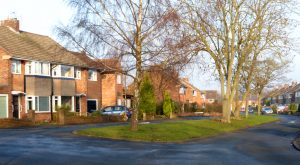Policy D5: Affordable Housing
Any scheme for new residential development, or for conversions of existing sites, on sites of more than 10 housing units, or of more than 0.4 hectares, must include 20% as affordable housing.
Affordable housing should be located on the proposed site. If there are very strong reasons why this is not feasible, then the affordable housing should be located within adjacent to, or nearby Our Neighbourhood.
4.195 If the percentage of affordable units is not a whole number then round to the nearest whole number as follows: if the number is followed by .5, .6, .7, .8, or .9, round the number up; if the number is followed by .0, .1, .2, .3, or .4, round the number down.
4.196 A recent House of Commons Briefing Paper (Wilson and Barton, 2018, p.5) looked at affordable housing and noted that “There is no all-encompassing statutory definition of affordable housing in England”. The NPPF defines affordable housing in Annex 2 covering social housing for rent and intermediate housing for sale or rent. There are proposed amendments to NPPF guidance on this topic with the overall premise that affordable is at least 20% below market rent or market value.
4.197 Affordable housing in Our Neighbourhood is affected by a premium on the value of housing caused by three main factors: (i) the strength of the buy to rent market because of the large number of students as a percentage of the population (53%), (ii) the high level of provision of new executive housing, and (iii) the large number of residential properties that are listed buildings or non-designated heritage assets. This means that 80% of market value is way beyond most people’s income levels. To achieve more realistically affordable houses to revitalise Our Neighbourhood requires more creative mechanisms than dependence on the market. For example: Durham County Council owns property in Our Neighbourhood that could be developed for realistically-affordable housing; Durham University could support its expansion by providing realistically-affordable housing for young academics starting out in the profession.
4.198 Affordable accommodation is also an issue for students. Durham Student’s Union (2018a,b) have been carrying out a campaign to address the cost of Durham University college accommodation. Though this does not include private PBSAs, many of these charge higher levels than the colleges. Durham University provide bursaries to assist qualifying students with their accommodation costs, but PBSAs do not provide any ‘affordable’ (at 80% of market rent) accommodation.
Justification
4.199 The Plan priority consultation (Durham City Neighbourhood Planning Forum, 2015) shows that family housing and affordable housing, for renting and for buying, are a particular need in Durham City and that appropriate provision is needed here for people starting out in the housing market, for families with children and for young professionals. The NPPF (para. 61) expects that such categories of need are recognised. Changes in law nationally tilt the provision from renting to owning and do not protect the affordable price in perpetuity. The Neighbourhood Plan seeks to keep both renting and buying as options. Provision can be made by new build or by conversions of former Houses in Multiple Occupation.
4.200 Large tracts of the centre of Durham City consist of terraced housing that is almost entirely given over to student accommodation. In the interests of fostering mixed and  balanced communities as envisaged by the NPPF (para. 62) and the Plan’s Policy D1, the Neighbourhood Plan attaches great importance to securing the reversion of some Houses in Multiple Occupation back to family homes and general housing, as covered in Policy D3.
balanced communities as envisaged by the NPPF (para. 62) and the Plan’s Policy D1, the Neighbourhood Plan attaches great importance to securing the reversion of some Houses in Multiple Occupation back to family homes and general housing, as covered in Policy D3.
Next section: Policy D6: Building Housing to the Highest Standards


1 Responses to Policy D5 – 2019 version